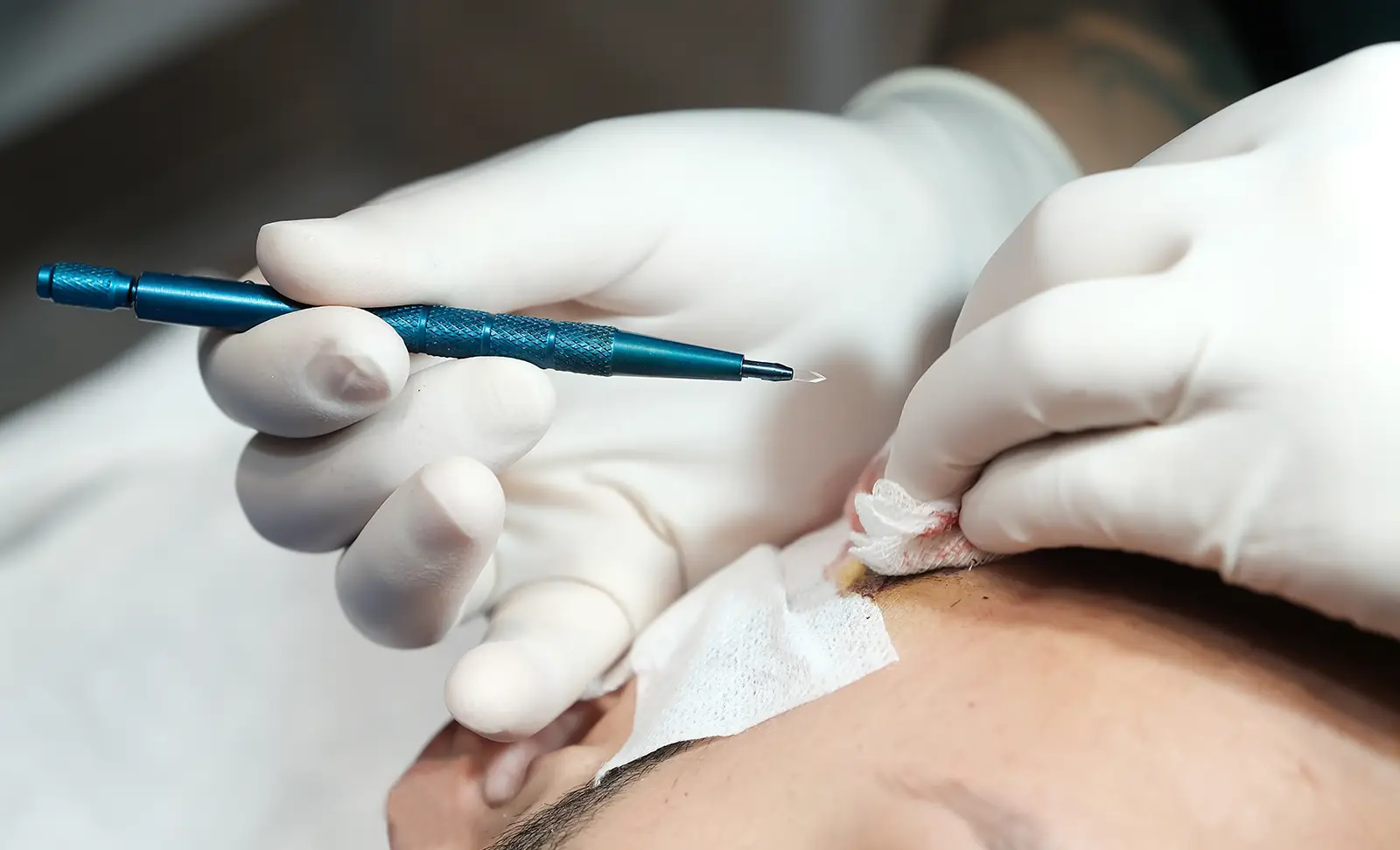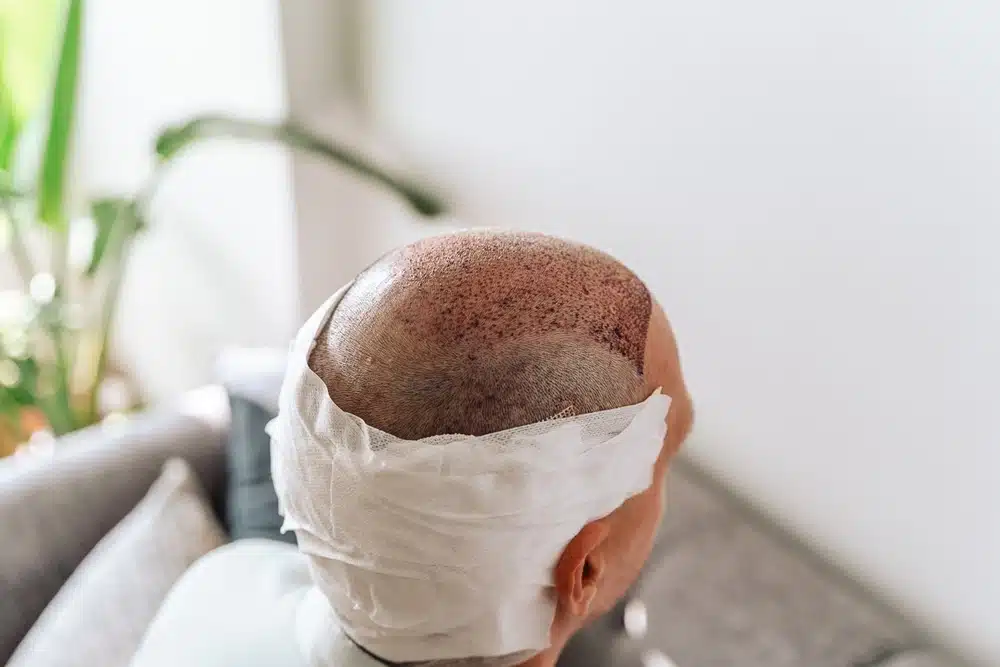Have you been thinking about getting a hair transplant? This route is an excellent option for many people experiencing hair loss as it provides a long-lasting solution that helps you regrow a full head of hair once more. While other methods exist to treat hair loss, hair transplants have high success rates. They are particularly popular with celebrities, with Wayne Rooney, John Travolta, and James Nesbitt opting for this non-invasive surgery.
Before you can undergo this treatment, you must learn about the different hair transplant methods. The two most advanced methods include FUE (follicular unit extraction) and DHI (direct hair implantation), which involve completely different processes. In this guide, learn all you need to know about FUE and DHI hair transplants, including the key differences and a consensus on which is better.
About FUE
FUE hair transplant surgery was first developed by Dr. William Rassman and Dr. Robert Bernstein in 2002. [1] It is extremely popular due to its ability to produce natural results.
The process involves a surgery gathering just a couple of hair follicles from the patient’s scalp, usually from the back or sides of their head, where the follicles are the strongest. The hair follicles are removed with a small, hollow punch tool, making a tiny incision.
Once these hair follicles have been manually extracted, the surgeon makes micro incisions in the area where the follicles will be placed (the area experiencing hair loss – often at the front of the scalp or the crown). Then, the grafts are placed into these slits, where the individual hair follicles take root in their new home and begin growing hairs there.
The recovery time following FUE is around one to two weeks, with results showing through after a few months. However, it takes around 12 months for full results. The results are very natural with minimal scarring.
About DHI
DHI stands for direct implantation, a relatively new hair transplant method that aims to produce even more natural results.
During the DHI hair transplant procedure, the surgeon extracts the hair follicles from a donor area using a method similar to the FUE hair transplant. However, after this point, the follicles are loaded into a special tool called the Choi Implanter Pen, which precisely implants hair follicles into the recipient area. Recovery time typically lasts up to a week, and patients can expect results within 12 months.
FUE vs DHI Hair Transplant Procedures: The Key Differences
So, what are the key differences between DHI hair transplant vs FUE? Knowing what separates them can help you better decide on your hair transplant.
DHI Uses a Special Machine
The FUE method requires the expert hands of a trained surgeon for results to look natural, whereas the DHI method uses a machine – the Choi Implanter Pen. As such, the DHI method can often provide more precise results.
FUE Covers Larger Areas
The DHI transplantation method is only meant to cover smaller areas. On the other hand, the FUE method can cover large areas of the scalp, so people with more extensive hair loss experience better results with this method.
The Size of Incision
One of the factors most patients are concerned about is the size of the incision made into the donor area to extract the donor hair. There is a slight difference between the DHI and FUE methods – the DHI method makes a slightly smaller incision of around 0.5 to 0.9mm, whereas the FUE method creates an incision size of 0.7mm to 1mm. However, this is a very subtle difference as both are miniscule and lead to minimal scarring.
DHI Leads to Faster Healing
While FUE and DHI don’t lead to lengthy recovery times, DHI still wins in this department. With DHI, patients can expect a very fast recovery process.
DHI is Often More Expensive
The DHI hair transplant method is typically slightly more expensive than FUE. However, consider a range of factors that influence the overall cost of hair transplant surgery, from the clinic you choose to the number of grafts you require. Some with very large bald areas will likely pay more than someone with minimal hair loss.
The Ideal Candidate
Both DHI and FUE appeal to different candidates. On the one hand, the DHI hair transplant method is best for patients with light hair loss, whereas the FUE method works better for patients with more extensive hair loss.
FUE vs DHI: The Similarities
We have now gone over the key differences between DHI and FUE hair transplants – so what about the similarities?
Full Growth Within 12-18 Months: There is no real difference between DHI vs FUE regarding results time, as it typically takes at least 12 months for full growth to be seen after either surgery.
A Natural Appearance: Both the FUE and the DHI methods produce natural results because they each extract individual hair follicles, leaving only a small incision and minimal scarring.
A Fast Surgery: DHI and FUE can be completed within a day, usually within four hours, depending on how many hair follicles are extracted and implanted.
Permanent Results: One of the best things about this hair loss treatment is that it produces permanent results. Whether opting for DHI or FUE, expect the growth to last a lifetime.
DHI vs FUE hair transplant: Which is Best?
We have now explored the key differences between a FUE hair transplant and a DHI hair transplant. So, which one is the winner?
There is no denying that DHI has some clear advantages – it’s a newer type of surgery that involves a specialised tool for perfect precision and accuracy. However, it does come with a slightly higher cost and isn’t a good option for those with more extensive hair loss. Plus, the FUE hair transplant can provide just as beautiful results, especially when choosing an expert surgeon.
There is no clear consensus here, as the best surgery between FUE and DHI depends on the individual.
Choose FUE if:
- You Have a Good Amount of Donor Hair
- You Need More Grafts
To learn more about the FUE method, you can speak to expert surgeons by downloading our hair track app.
Choose DHI if:
- You Only Have Mild Hair Loss
- You’re Willing to Pay a Higher Cost
What About FUT?
You might be wondering, what about FUT? FUE and DHI hair transplants are the most advanced options, but the FUT hair transplant method remains.
FUT stands for follicular unit transplantation. This hair restoration technique differs from the FUE or DHI methods as it involves extracting an entire strip of skin containing multiple hair follicles. This can lead to more scarring compared to the other methods. Although the surgery may be quicker, the hair typically covers the scarring.
FUT tends to be a good method for those requiring maximum coverage – those who have experienced extensive hair loss. It is also often the better option for those with curly hair.
Is Hair Transplant Surgery Right For You?
After learning more about DHI and FUE, you might wonder, is a hair transplant the right path for you? Here are some questions to ask yourself.
Have you Tried Other Hair Restoration Methods?
It’s typically recommended that patients try a less invasive method first – for example, hair loss medications like minoxidil. While this is not a requirement, it can be helpful to see if another option can restore your hairline.
Do You Know What’s Causing Your Hair Loss?
Hair transplants are best for androgenetic alopecia, [2] the most common cause of hair loss. Determining what’s causing your hair loss is important before deciding on the action plan. For example, it could be caused by a nutritional deficiency, and taking a simple supplement may be the solution.
Are You a Good Candidate?
It’s best to ask yourself whether you are a good candidate for hair transplant surgery before deciding upon it. The best candidates for hair transplants are:
- Over 25 Years Old
- Have No Scalp Infections
- Have Experienced Significant Hair Loss
- Have Stabilised Hair Loss
- Have Enough Donor Hair
- Are Reasonable About Expectations
DHI vs FUE: Final Thoughts
DHI and FUE hair transplants are excellent methods for restoring hair growth in patients. Learning about their differences is important before choosing which is right for you. There is no clear winner regarding which is best, as both have advantages.
Are you interested in learning more about the FUE method? Perhaps you are ready to begin your hair restoration journey. In this case, we are here to help, as we are the leading provider of hair transplants in the UK, with expert surgeons who are highly skilled at delivering excellent results. Get in touch today or head to our patients gallery to see the results we can offer you!
Sources:
- https://ijdvl.com/history-of-follicular-unit-excision/
- https://www.ncbi.nlm.nih.gov/books/NBK430924/#:~:text=Androgenetic%20alopecia%20manifests%20as%20a,of%20the%20vertex%20(see%20Image.




